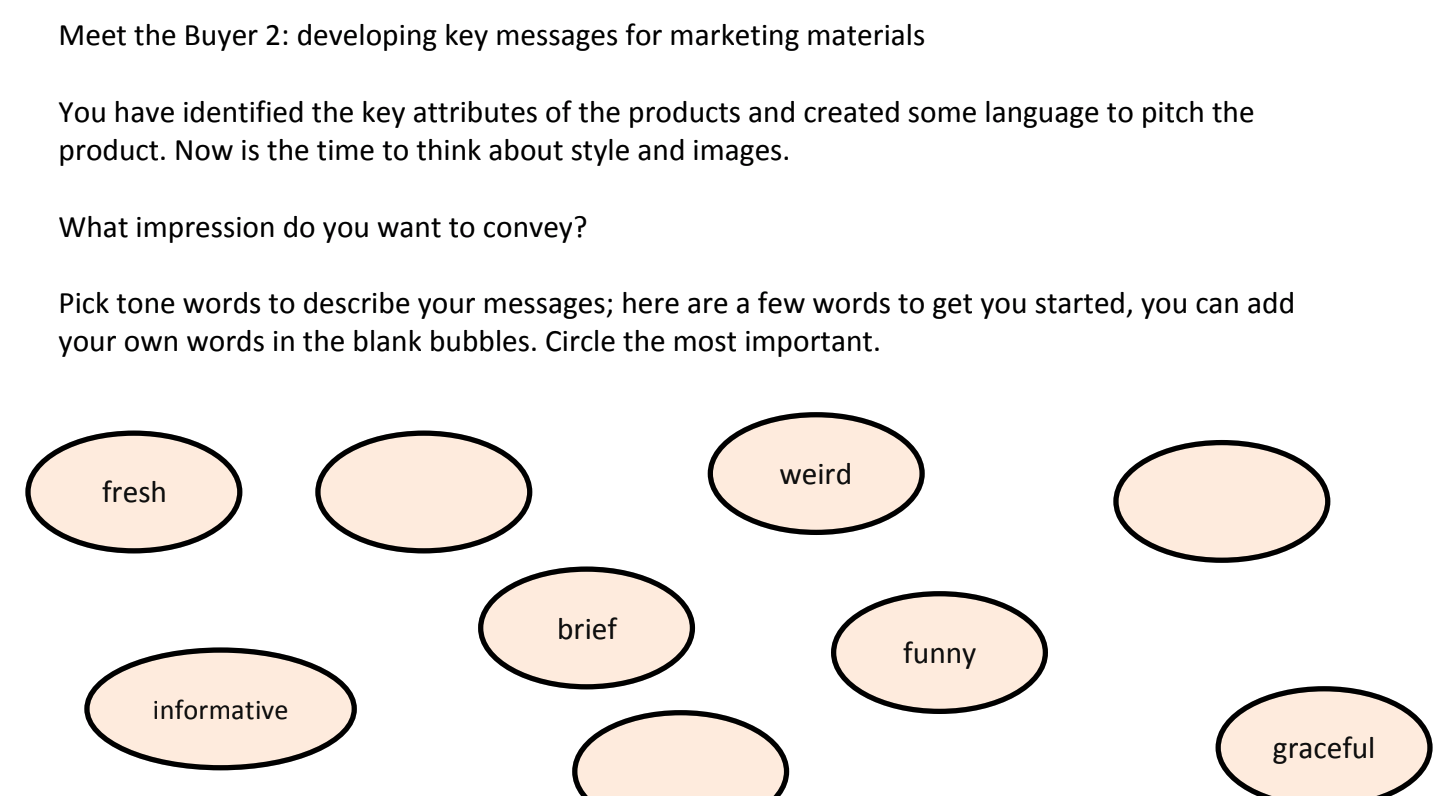In this presentation, Kerr Smith explains how you can become a brand ambassador for your product, and use this marketing strategy to the best effect.
What impression do you want to convey?
You have identified the key attributes of the products and created some language to pitch the product. Now is the time to think about style and images.
Click on the images above to see them larger. Click here to download a pdf of the images.
Start thinking about how you want your marketing to look. Do you want lots of information on a page? Playful images and approach? Formal and restrained? The colours you choose will be part of getting this right. You can find lots of research on the internet about the use of colour in marketing. It is important to remember that the best use of this draft material is probably to work with a professional to make sure that your marketing images are powerful.
This document shows you some best practices for making your marketing material stand out. Click to view PDF.
In general, drab colours are not used for marketing food and farming products. Red is bright but startling, linked to alarms and emergencies. Green is well-used in this sector, so if you use green, choose a tone you like and that is perhaps less common than other tints and tones. Once you have your colour, remember that most graphics programs allow you to record the technical code associated with the colour, and to ensure that whenever you use it you can use precisely the same colour. Note also that different browsers and print shops may show the colour differently. Reds and greens are particularly prone to distortion, so check your material on different platforms before finalizing. See an example of colour branding and code below.
Click on this image to see it larger.
Worksheet
Meet the Buyer 2. Click to view this PDF.
At this stage in this module, you will draft messages to be used in textual material, from brochures to social media. This worksheet then examines these messages further for essential elements: does the message provide everything they need to know? Does it provide contact information? Is it clear what the product is (unless the goal is to create a mystery)? Is it clear how to buy the product? Think of all the different groups that might see this—can it be misunderstood by any of them in a negative way? Is it easy to read? What do other people say about it?
Find some people to review it outside your group, especially people who are less sympathetic and if possible people who represent your target buyer group. Record their feedback, look for patterns, consider revisions if there are recurring negative input about it, especially if there is agreement on the problems. If there is a label, try the product on a shelf, move a distance away to where a customer turns the corner to the aisle, see how it looks. Try it in prime locations as well as less favorable ones—can you still see it on the bottom shelf?
Resources
In this video, Harris Ivens, farm business planning trainer and developer, talks about how to approach buyers as well as how to develop successful marketing strategies for selling beyond the farm gate.
In this video you'll get an introduction to the online graphic tool Canva.
To develop professional-looking marketing materials, you can use Canva (a free design platform) or other graphic programs. The webinar just above to the right provides a short tutorial on the use of Canva. The website offers lots of helpful hints as well, with some templates in the free version, and many additional templates in the paid version.
More resources
If you work collaboratively with a large team or co-operative, here are some exercises you can do as a team. This process takes you through the steps of identifying your key materials and messages together, and then drafting and reviewing materials.
Collaborative Marketing for Small Farms: this resource can help you develop strategies for collaborative or co-operative farms. Click to view this PDF.
Peak of the Market is a co-operative farming organization in Manitoba that has operated for 75 years, and is excellent example for all kinds of growers.














